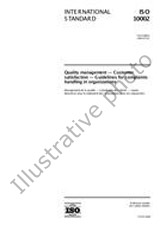We need your consent to use the individual data so that you can see information about your interests, among other things. Click "OK" to give your consent.

ISO/TS 10303-1650:2018-ed.5.0
Industrial automation systems and integration — Product data representation and exchange — Part 1650: Application module: Bare die
Translate name
STANDARD published on 18.12.2018
| Availability | IN STOCK |
| Price | ONREQUEST excl. VAT |
| ON REQUEST |
The information about the standard:
Designation standards: ISO/TS 10303-1650:2018-ed.5.0
Publication date standards: 18.12.2018
SKU: NS-943498
Approximate weight : 300 g (0.66 lbs)
Country: International technical standard
Category: Technical standards ISO
The category - similar standards:
Annotation of standard text ISO/TS 10303-1650:2018-ed.5.0 :
Description / Abstract: ISO/TS 10303-1650:2018-11 specifies the application module for Bare die. The following is within the scope of ISO/TS 10303-1650:2018-11: The representation of the information needed to describe a semiconductor material product that is an integrated circuit component, or that may be a discrete active component, or that may be included as a component in an electronic assembly. Terminal information is supported, including explicit shape data. A bare die usually refers to semiconductor substrates that are traditionally considered protected by a container, called a package. definition of the minimum content model of an interface control definition of a bare die, including its terminals, behavioural simulation model, and shape.
We recommend:
Updating of laws
Do you want to be sure about the validity of used regulations?
We offer you a solution so that you could use valid and updated legislative regulations.
Would you like to get more information? Look at this page.



 Cookies
Cookies
